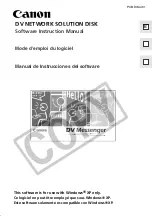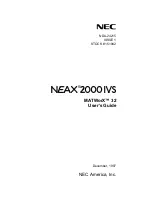
context point
A specific tool node you mark as the target for a Player view.
Context points are especially useful when you want to see how changes to a
tool node that precedes the node with a context point affect the context point.
corner pinning
A technique used to pin the four corners of one static image
(usually) onto another static image.
cue marks
High-level keyframe controls that let you associate a keyframe
with a mark. Instead of viewing a clip over and over again in order to evaluate
and record important timing points, you can view footage and add cue marks.
dependency graph
A set of connected nodes consisting of one or more
inputs, an output, and any number of effects or compositing operations.
depth of field
The range of acceptable focus in front of and behind the
primary focus setting. It is a function not only of the specific lens used but
also on the distance from the lens to the primary focal plane, and of the chosen
aperture. Larger apertures will narrow the depth of field, smaller apertures will
increase it.
Domain of Definition (DOD)
A usually rectangular region that defines the
maximum boundaries of useful information in an image. Generally, everything
outside of the DOD will have a value of 0 in all channels of the image. The
DOD is usually determined automatically, as opposed to a Region of Interest.
See also Region of Interest.
expressions
Mathematical formulas that let you control any parameter that
can be animated, such as translation, rotation, scaling, material, or texture.
Expresso calculator
An extension of the standard calculator that allows you
to create expressions that generate values used in numerical fields.
external matte
A matte taken from another clip. See also matte, garbage
matte, static matte and traveling matte.
garbage mask
Garbage masks can key undesired elements in an image and
to do rotoscope work. A garbage mask affects the image's alpha channel, which
is where the transparency information is stored. You can use a mask to create
the alpha channel, or you can use a mask to add to an alpha channel.
garbage matte
A rough simple matte that you create in an image's alpha
channel that isolates unwanted elements from the primary element in an
image. Garbage mattes are also referred to as garbage masks. See also matte,
external matte, static matte, and traveling matte.
hue
A specific color from the color spectrum, disregarding its saturation or
value.
880 | Appendix E Glossary
Summary of Contents for 495B1-05A111-1301 - 3ds Max Design 2010
Page 1: ...Composite User Guide ...
Page 16: ...4 ...
Page 18: ...6 ...
Page 88: ...76 ...
Page 92: ...6 A new composition has been created 80 Chapter 4 Start Compositing Now ...
Page 102: ...90 ...
Page 122: ...110 ...
Page 126: ...114 ...
Page 186: ...174 Chapter 9 Getting Familiar with Your Workspace ...
Page 195: ...UdaTextField XML Resource Files 183 ...
Page 196: ...UdaValueEditor UdaMenu 184 Chapter 9 Getting Familiar with Your Workspace ...
Page 197: ...UdaPushedToggle XML Resource Files 185 ...
Page 198: ...UDA Declaration 186 Chapter 9 Getting Familiar with Your Workspace ...
Page 200: ...188 ...
Page 250: ...238 ...
Page 310: ...298 ...
Page 348: ...336 ...
Page 399: ...About Blurs 387 ...
Page 411: ...Output Controls The Output UI allows you to control the following parameters About Blurs 399 ...
Page 450: ...438 ...
Page 478: ...466 ...
Page 520: ...508 ...
Page 548: ...536 ...
Page 578: ...566 ...
Page 596: ...The last step is to add the sun s reflection to the water 584 Chapter 24 Raster Paint ...
Page 606: ...594 ...
Page 670: ...658 ...
Page 710: ... a Tool time cursor b Global time frame markers 698 Chapter 28 Time Tools ...
Page 722: ...710 ...
Page 806: ...794 ...
Page 828: ...816 ...
Page 870: ...858 ...
Page 888: ...876 ...
Page 898: ...886 ...
















































